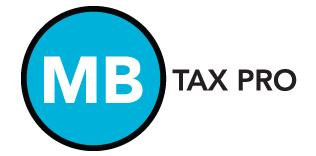The past year has been a wild ride for many homeowners. Foreclosures have been at an all time high all over the country. Some people have prevented foreclosure by selling their home for less than what they owed on the mortgage. This is called a short sale. Before Dec, 20th this created taxable income, but now there is a way around this which can save taxpayers from financial ruin. If you were involved in a short sale in 2007 make sure to let us know so we can report it correctly on your tax return. Also, if you are being threatened with foreclosure talk to your bank about the possibility of a short sale. If you have questions about how things will impact your tax world please give us a call. We are including an article below that we thought you might find interesting. Please feel free to share it with others.
DEC. 21 -
Normally, debt forgiveness results in taxable income. But under the Mortgage Forgiveness Debt Relief Act of 2007, enacted Dec. 20, taxpayers may exclude debt forgiven on their principal residence if the balance of their loan was less than $2 million. The limit is $1 million for a married person filing a separate return. Details are on Form 982 and its instructions, available now on IRS.gov.
“The new law contains important provisions for struggling homeowners,” said Acting IRS Commissioner Linda Stiff. “We urge people with mortgage problems to take full advantage of the valuable tax relief available.”
The late-December enactment means that reporting procedures for this law change were not incorporated into tax-preparation software or IRS forms. For that reason, people using tax software should check with their provider for updates that include the revised Form 982. Similarly, the IRS is now updating its systems and expects to begin accepting electronically-filed returns that include Form 982 by March 3. The paper Form 982 is now being accepted, but the IRS reminds affected taxpayers to consider filing electronically, which greatly reduces errors and speeds refunds.
The new law applies to debt forgiven in 2007, 2008 or 2009. Debt reduced through mortgage restructuring, as well as mortgage debt forgiven in connection with a foreclosure, may qualify for this relief. In most cases, eligible homeowners only need to fill out a few lines on Form 982.
The debt must have been used to buy, build or substantially improve the taxpayer's principal residence and must have been secured by that residence. Debt used to refinance qualifying debt is also eligible for the exclusion, but only up to the amount of the old mortgage principal, just before the refinancing.
Debt forgiven on second homes, rental property, business property, credit cards or car loans does not qualify for the new tax-relief provision. In some cases, however, other kinds of tax relief, based on insolvency, for example, may be available.
Borrowers whose debt is reduced or eliminated receive a year-end statement (Form 1099-C) from their lender. For debt cancelled in 2007, the lender was required to provide this form to the borrower by Jan. 31, 2008. By law, this form must show the amount of debt forgiven and the fair market value of any property given up through foreclosure.
The IRS urges borrowers to check the Form 1099-C carefully. Notify the lender immediately if any of the information shown is incorrect. Borrowers should pay particular attention to the amount of debt forgiven (Box 2) and the value listed for their home (Box 7).
